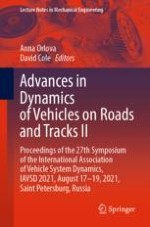2022 | OriginalPaper | Buchkapitel
What is the Right Way to Model Traction Power Distribution in Complex Heavy Haul Locomotive Models?
verfasst von : Maksym Spiryagin, Peter Wolfs, Qing Wu, Colin Cole, Tim McSweeney
Erschienen in: Advances in Dynamics of Vehicles on Roads and Tracks II
Aktivieren Sie unsere intelligente Suche, um passende Fachinhalte oder Patente zu finden.
Wählen Sie Textabschnitte aus um mit Künstlicher Intelligenz passenden Patente zu finden. powered by
Markieren Sie Textabschnitte, um KI-gestützt weitere passende Inhalte zu finden. powered by
